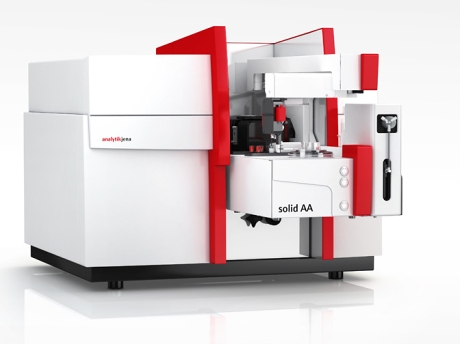|
Instrument Database:
Analytik Jena GmbH - ZEEnit 650 P (graphite AAS with Zeeman technique)
| |
|

|
| |
|
| |
|
| Year of introduction |
2009 |
| Status |
available |
| Company |
Analytik Jena GmbH
|
| Categories |
Spectrometer ( Atom. ): AAS: Furnace
|
|
ZEEnit 650 P — with a plus of innovative features The ZEEnit 650 P is a high-performance atomic absorption spectrometer for fully automated graphite AAS with Zeeman and Deuterium background correction. At a glance - 8-lamp changer for maximum automation and sample throughput
- Single and double beam available
- D2 background correction and Zeeman third generation background correction
- Integrated RFID Tool for working with coded lamps
- Integrated super lamp power supply for best analytical performance
- Integrated High-end Vision Tool for best observation and control of sample injection and sample drying in the graphite tube
- Transverse-heated graphite furnace — also for complex matrices and refractory elements
High sample throughput - Variable sample introduction technique capable of easily processing both liquids and direct solids making it unique
- High performance autosampler MPE featuring functions such as intelligent dilution and enrichment makes over-night processing routine and guarantees the highest dosing precision
- High sample throughput, variability and efficiency ensured by the dual atomizer concept
solid AA — Direct analysis of solid samples The transversely heated graphite furnace facilitates the introduction of liquid samples as well as direct solid sample feed. The combination of the furnace with powerful background correction forms the basis for optimal results. In addition, the development of a specially optimized sample carrier allows the analysis of various solids from powders to sample pieces. The geometry of the carrier guarantees ideal atomization conditions in the solids tube and reliable transport procedures for sample introduction. The different manual or automatic samplers for solids make the use of ZEEnit for direct solid analytics child's play. The 3-field mode opens up a multitude of new possibilities, as significantly greater contents can be measured without dilution in a wide range of samples.
|
Related links:
|